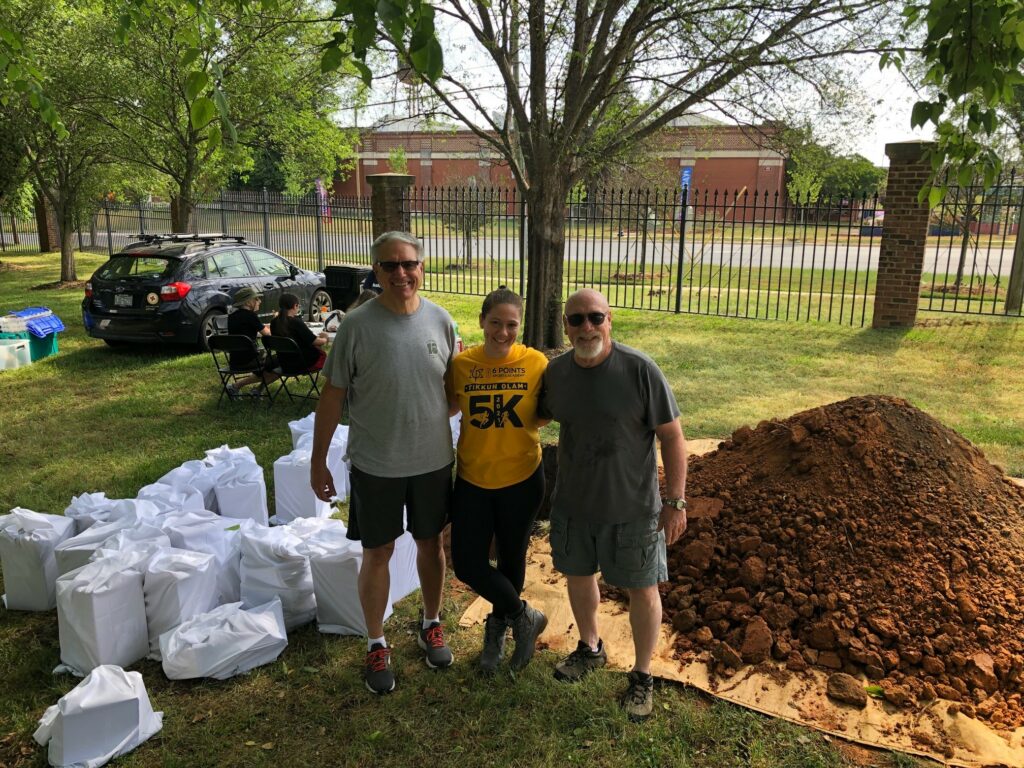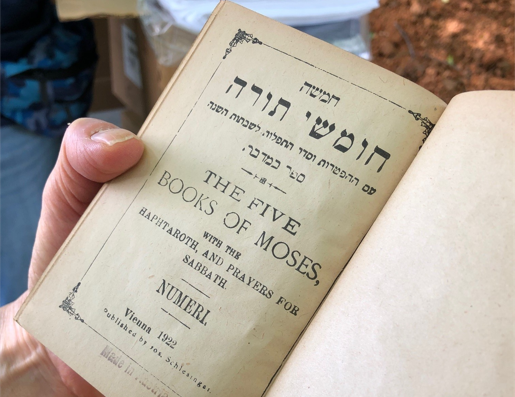The Jewish act of burying sacred texts and objects is grounded in an understanding of what it means to properly respect and honor sacred objects: prayer books and other texts within which God’s Unpronounceable name is written, ritual items like tallitot and kippot, Torah scrolls so worn with time that they have become pasul – no longer kosher.
All synagogues accumulate these texts and objects over time, and every so often, a synagogue will collect all that has become worn and torn, along with prayer books that have fallen out of use or been replaced, and deposit it into a genizah. For the Jewish community of Charlotte, Hebrew Cemetery serves as our genizah location.
As we were returning to the office, again, in December 2021, we attempted a deep clean of our various spaces. We have always maintained an area in a storage closet where we collect items for eventual genizah, and by the time we completed our deep clean, it was clearly time to schedule a trip to the cemetery. That is how I ended up spending the morning of Sunday, May 22 in a mini funeral procession of sorts, leading a group of TBE Brotherhood volunteers and vehicles full of books, up Providence Road, around Uptown to Graham Street, and then over to Hebrew Cemetery.
Courtney Rosenthal, who heads our chevrah kadisha, and Brian Yesowitch, a TBE congregant and member of the Hebrew Cemetery Board of Directors, met us at the cemetery and directed us to unload the books near the grave sites that had been prepared earlier that week.
Before the ritual, we took some time to arrive, both physically and spiritually. We were met by volunteers – b’nei mitzvah families, longtime members of temple’s Torah Study group, and a few folks who had their own books and objects to contribute – to complete a little service work at the cemetery, offering their respects with good old elbow grease. Some went off to scrub away accumulated dirt from headstones, others to level foot stones that had become uneven over time, and a few of us began to transition the books into their shrouds – in this case, white pillowcases.
Transitioning the books into their burial “attire” gave us a chance to appreciate the history we were honoring in this moment – hundreds of prayer books and high holiday machzors Temple Beth El once used weekly and yearly, now just gathering dust. At one point, a congregant called me over – “how amazing is this??” And she showed me the inside cover of a chumash, a small copy of the Five Books of Moses, published in Austria in 1922. What an honor to show proper respect to a one hundred year old book, carried across oceans, once used for study and learning and now ready to be laid to rest.
The ceremony was simple – we offered a prayer or two, silently deposited the pillowcases full of books into the graves, recited Kaddish d’rabanan, a prayer we offer in honor of our teachers, and took turns contributing dirt to the graves. And yet, there was beauty in the simplicity – beauty in coming together to recognize the importance of words, and learning, the holy objects and items and times that help us, in turn, recognize the holiness in each other.
May the words of those books and the memories imbued in those ritual objects be a blessing to all whose hands they touched and minds they enlivened, and may we all be blessed by their teachings.





